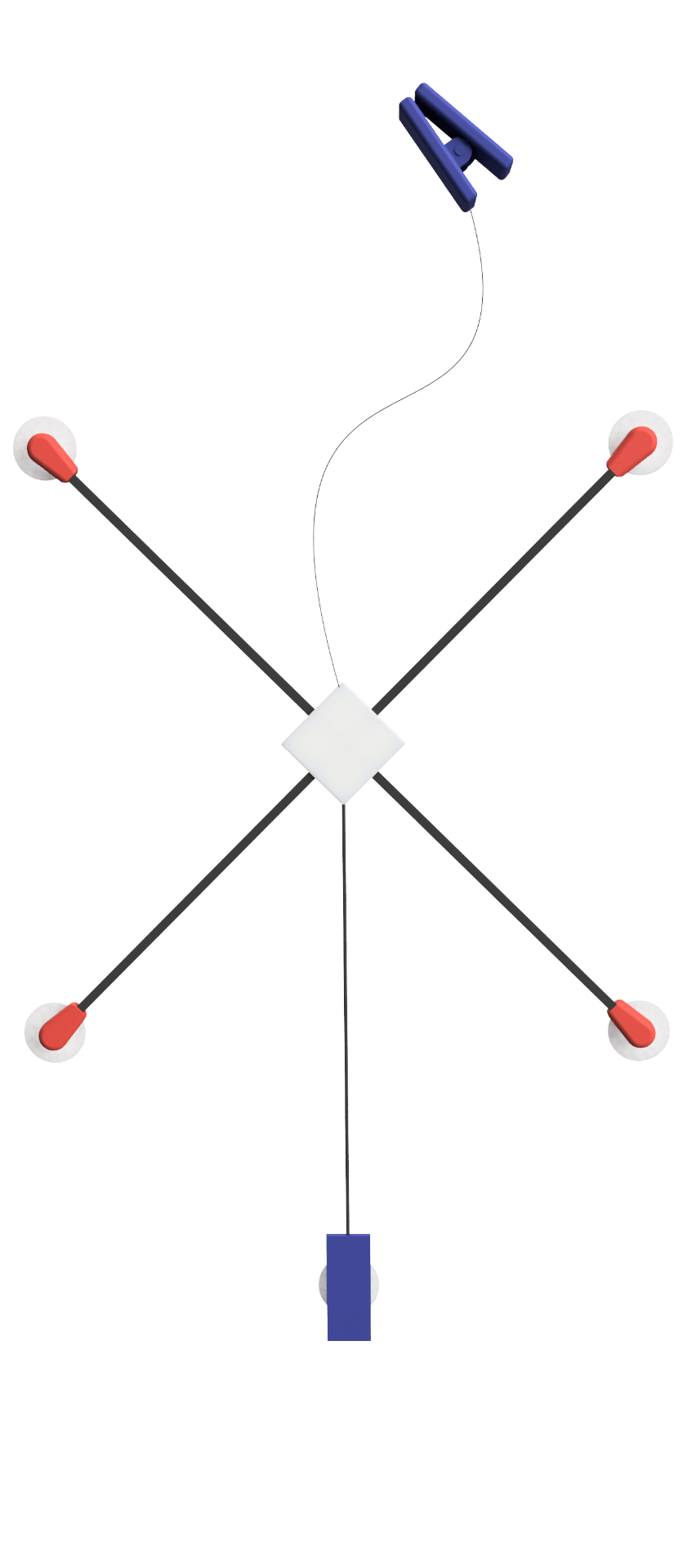Get to know our team on LinkedIN:
Gianna Acocella, Juan Vasquez Grimaldo, Alexis Bateh & Reinaldo Mock
Vitals Untethered
A less restrictive, vital sign monitoring device to combat inpatient hospital-acquired delirium.
The Butterfly is a novel vital sign monitoring device that allows for the measurement of 5 critical patient outcomes in one device: Heart rate, body temperature, oxygen saturation, respiratory rate, and electrocardiogram (EKG) monitoring. The device features two elastic bands that cross the chest to form an “X”. One band features a piezoresistive wire, which allows for the measurement of the patient’s respiratory rate. The ends of each band snap onto electrodes placed on the patient which allows for the 3-lead EKG. At the center of the bands, the body temperature sensor lies. The SpO2 sensor also stems from the center of the band and is attached to the ear lobe via a clip. Finally, all of the sensors are powered through an Arduino system, housed in a slim central unit that sticks onto the abdomen.
Project Description:
Every patient admission to the hospital is accompanied by vital sign monitoring. Vitals signs are taken upon patient admission, and continuously monitored or checked throughout a patient’s stay. Vital signs, appropriately named vital, give medical professionals a wholistic view of a patient’s condition. Specifically, changes or fluctuations in a patient’s vitals allow medical professionals to appropriately stabilize the patient. Though vitals are crucial to patient care, the predicate monitoring systems impede quality of care due to the restrictive nature of the systems. With multiple systems needed to create a snapshot of the vital signs, patients become tethered to their beds, and become prone to developing hospital-acquired delirium. Hospital-acquired delirium is a condition characterized by cognitive disorientation that leads to changes in awareness, movement, and behavior. As such, we have concluded that hospital inpatient care requires less restrictive vital sign monitoring. To allow patients to soar, we have developed The Butterfly. The Butterfly is a novel vital sign monitoring device that allows for the measurement of 5 critical patient outcomes in one device: heart rate, body temperature, oxygen saturation, respiratory rate, and electrocardiogram (EKG) monitoring. When compared to predicate monitoring devices, the sensors in The Butterfly exhibited a correlation of 99% for heart rate, EKG and a 70% correlation for body temperature. Additionally, The Butterfly takes the many wires patients would typically be connected to and reduces that number to 1. Validation testing showed that The Butterfly allowed patients movement of up to 24 feet, double the mobility currently available to inpatients in the hospital. This independence keeps patients comfortable while assuring medical professionals of their condition. Looking to the future, the team would further develop the circuitry in the Butterfly to create a more compact system and add a remote monitoring system to further improve patient mobility in the hospital.



